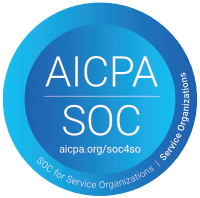Language Services and the ‘American Dream’: Interpreters Supporting Immigrants
By Dr. Richard Brecht, Harvard Ph.D
Historically, America, Australia, and Canada have been major destinations for migrants from across the world, as these ‘new worlds’ offered opportunities only dreamed of by oppressed populations. However, these English-dominant environments have presented daunting, even dangerous, communication challenges, where accommodation to speakers of languages other than English has always been a challenge. Traditionally, the onus to adjust to their new society has been imposed on the foreign arrivals to learn English and assimilate, the “melting pot” metaphor implemented, resulting, at best, in tolerance of these Limited English Proficient (LEP) communities… if not outright resistance. In fact, what has come to be called language ‘discordance’ is a major obstacle to generations of immigrants seeking to live the ‘American Dream’.
The U.S., Then and Now
There was a time when the vast majority of residents in North America spoke languages other than English. However, as a young nation with evolving power structures, expanding demographics, parochial doctrines, and unrequited arrogance, we moved deliberately towards a “devoutly English-speaking society.”[i] Our early linguistic wealth comprised approximately 500 indigenous languages,[ii] as well as several colonial and many immigrant languages. However, racial prejudices led to laws severely limiting immigration from major world societies again with clear social ramifications ( e.g. Page Act of 1875 restricting Chinese immigration, 1921 Emergency Quota and 1924 National Origins acts). Only after the passage of the Immigration and Nationality Act of 1965 did we open our doors to immigrants from Africa, Asia, and Latin America. These populations, today constituting the flow of immigrants at our southern border and now including native Indian language speakers, have resulted in today’s unprecedented scale of immigration.

The latest U.S. Census (2022) data identify approximately 46.2 million ‘foreign born’ residents of the total U.S. population of 333 million. (Boundless) As a result, thousands of communities across this nation are becoming multicultural and multilingual, building on the indigenous and immigrant diversity established centuries ago and continuing throughout its history.
Welcoming Immigrants

The Immigrant Journey
While granting entry and residence to immigrants into the U.S. is the first step, their success and ability to contribute to the nation’s economy takes time; practically speaking, the transition to another country and culture is a gradual process of two or three generations. In this process, recent immigrants and their children keep their native language, with parents struggling to learn English and their children speaking L1 at home and English in school. As adults, the children of immigrants become bilingual, but their children are usually fluent English speakers who may comprehend the speech of their parents and grandparents but are unable to speak it. By the third generation, the original home language is gone, replaced by fluent English monolingualism. This long period of transition is fraught with challenges, as, first and foremost, the first two generations must cope with the frequently devastating consequences of poor healthcare, denied legal assistance, and limited education access due to their language ‘discordance’ with the English-dominated systems.
Around the world, as here, increasing emigration from unsafe and poverty-stricken environments to adjacent or distant places is producing whole societies, major urban areas, and local towns and municipalities with unprecedented diverse populations with languages that challenge and even disrupt the services that these societies normally grant to their residents. However, particularly here and in other English-dominant countries, the tradition of leaving language ‘discordance’ to be solved by generational transitions to English fluency results in years of denial of access to medical, legal, and educational services, ultimately placing even more burdens on the healthcare, judicial, and educational systems. This situation represents an unjust restriction on the freedom of immigrants to access these and all the social services to which they are entitled as residents of the U.S.
Enter Language Services

The U.S. is fortunate in having a language services industry which leads the world in breadth and effectiveness across various industries such as healthcare, legal, and business. For example, three out of the first four “Prominent Market Player’s Revenue In Language Services Market” are US companies, with two of the top three companies providing both translation and Interpretation. (THE 2024 NIMDZI 100)
There are obvious reasons for this US dominance, including market demand, legal protections, and standards and certification requirements:
- “America’s Languages”: Multilingual populations, starting with the hundreds of Native American languages, have always constituted a permanent part of U.S. society. Today, in this country, there are approximately four hundred languages spoken, among which are Spanish with over forty-two million speakers, Chinese Mandarin with more than three million, more than a million speaking Vietnamese, Tagalog/Filipino, Arabic, French/Cajun, or Korean, as well as Portuguese, Russian, Haitian, Hindi, Urdu and West African and Afroasiatic languages, each with a half to a million speakers.
Of particular relevance to populations with genuine language discordance issues is the U.S. Census-documented number of ‘Foreign Born” who speak English “less than very well,” where the need for language assistance is most obvious. For example, in 2021, this number was over fifty percent in states like California, Kansas, Nebraska, and Texas, and over forty percent in over half of the states of the Union.
- Legal Protection: To protect the advantages of immigration to the nation and its diverse populations, the U.S. relies on Title VI of the Civil Rights Act of 1964, Executive Order 13166, The Affordable Care Act (ACA), and The American with Disabilities Act (ADA), which ensure that hospitals and courts, for example, provide interpretation services to guarantee effective communication and healthcare and legal compliance.
- The private sector’s development and enforcement of professional standards & certification is critical in supporting the federal regulations requiring language services. The U.S. has strong professional organizations, such as the American Translators Association (ATA) and the National Association of Judiciary Interpreters and Translators, which set standards and offer certifications. Healthcare providers and organizations themselves are actively involved in developing their own measures to ensure ‘language concordance’ in their operations as a way to better serve their patients and lower costs. They also expect language services to conform to the standards of the Health Insurance Portability and Accountability Act (HIPAA) as the widely accepted quality assurance for language services.

Conclusion
The U.S. continues to struggle to accommodate its traditional as well as newly bilingual communities with the language support they need, particularly in healthcare and legal access. Language services, a critical pillar of a much-needed U.S. national language policy must be relied upon to continue to fill what is a growing social justice need. More specifically, the access to interpretation provided by language services is critical to the quality and financial stability of healthcare systems, which are obligated by law to accommodate language ‘discordance’. An outstanding example in this regard are the steps taken by hospital systems like Massachusetts General Brigham, where its research on mitigating language discordance is revealing the benefits of effective and efficient on-demand language interpretation with language service providers such as Jeenie.
[i] Richard Lambert’s term
[ii] Cited in Macías, Reyhaldo F. 2014. “Benefits of Bilingualism: In the Eye of the Beholder?” In Callahan & Gándara, eds. 2014. The Bilingual Advantage: Language, Literacy and the US Labor Market. Multilingual Matters: Buffalo. P. 18
- About the Author
Dr. Richard Brecht, Harvard Ph.D
Dr. Richard Brecht, Harvard Ph.D, is Co-Founder and Chief Language Officer of Jeenie. A University of Maryland Professor Emeritus, he also currently serves as co-director of the American Councils Research Center. As an academic entrepreneur, he has been essential in founding, building, and leading organizations across academe, government, business, NGOs, heritage and indigenous populations. Dr. Brecht has published and presented widely on language policy, second language acquisition, Slavic linguistics, and most recently on language and social justice. He has testified multiple times before Congressional committees and received numerous awards from national and international organizations in the language field.












